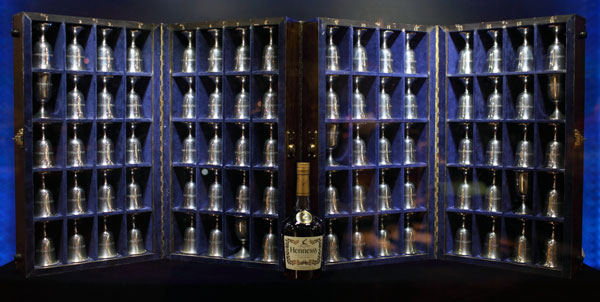
When the notice above was posted on a bulletin board at Elgin Field in Florida in early 1942, at least 140 men volunteered for the dangerous unknown mission. They were told nothing but diligently trained in land-based B-25s.
President Franklin Roosevelt pushed for the raid as a morale boost after the Japanese attack on Pearl Harbor just four months earlier. On April 18, 1942 sixteen B-25s took off the deck of the USS Hornet, an American aircraft carrier. Led by Lt. Col. James H. (Jimmy) Doolittle, the first attempt to bomb Japan was dubbed Doolittle’s Raid. Eighty pilots and crew members took part in the attack.
For weeks the crews had practiced taking off a 500-foot runway, instead of the 5,000-foot runway a B-25 was accustomed to. The planes were stripped of any and all unnecessary equipment to allow for extra fuel tanks and 2000-pound bombs. Even the tail guns were removed and replaced by broomsticks. Still the men knew nothing of the purpose of the mission.
The sixteen planes were hoisted aboard the Hornet, then carrier set sail from California. After two days the men were told their challenge. Anyone who wished to drop out could do so with no qualms; but none left. As the Hornet made its way to Tokyo, the carrier was spotted by Japanese fishermen.
Doolittle ordered an immediate start to the mission, some 200 miles farther out than planned. The first plane in the air was piloted by Lt. Col. Doolittle. Plane number six was flown by Dean E. Hallmark, a Greenville football hero in the thirties and a surveyor in South America later. His nickname was Jungle Jim and standing 6 feet three inches tall, weighing about 200 pounds it was appropriate. The navigator/bombardier on plane number 8 was also from Greenville, Nolan A. Herndon. Actually, Greenville was the only town in the U. S. with two crew members on the team.
All sixteen planes dropped bombs on industrial sites of some importance. It was not really a dramatic bombing, but a morale boost for Americans. It also got the attention of the Japanese government. No longer were they positive of total victory.
Fifteen of the planes headed toward China but had fuel shortage due to the early start. Some ditched in the China Sea while others did make it to the mainland. Plane number 8 took a different route, one where they landed in Russia.
Three men died after leaving Tokyo, two having drowned. Eight were captured. Of that eight, three were executed by Japanese soldiers in China, including Dean Hallmark of Greenville.
In the late 1940s members of Doolittle’s Raiders began a custom that lasted until 2013. Every year, the eighty men gathered for a dinner and a private ceremony. Each man had a silver goblet with his name inscribed on it. A toast was made to those men who died in the past twelve months. Then that person’s goblet was inverted. A bottle of Cognac was kept for the last three Raiders. In 2015 all members the Raiders, living or deceased, were presented Congressional Gold Medals, most posthumously.
This year, Lt. Col. Richard E. Cole passed away. He was 103 years old, the last of Doolittle’s Raiders. Today the goblets, another bottle of Cognac, and other memorabilia is housed in the National Museum of the United States Air Force at Wright Patterson Air Force Base in Ohio. An honorable ritual for such gallant men who volunteered for such a mission with no indication of the dangers.
